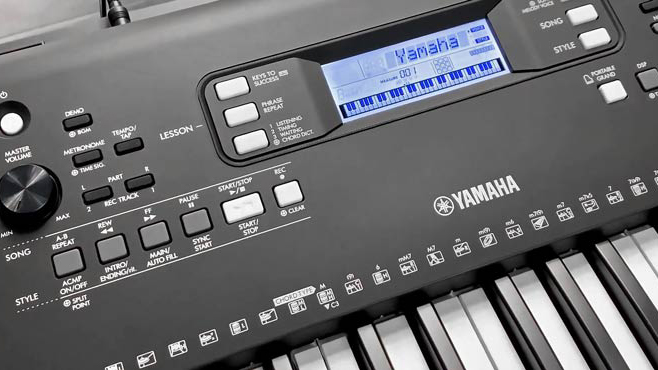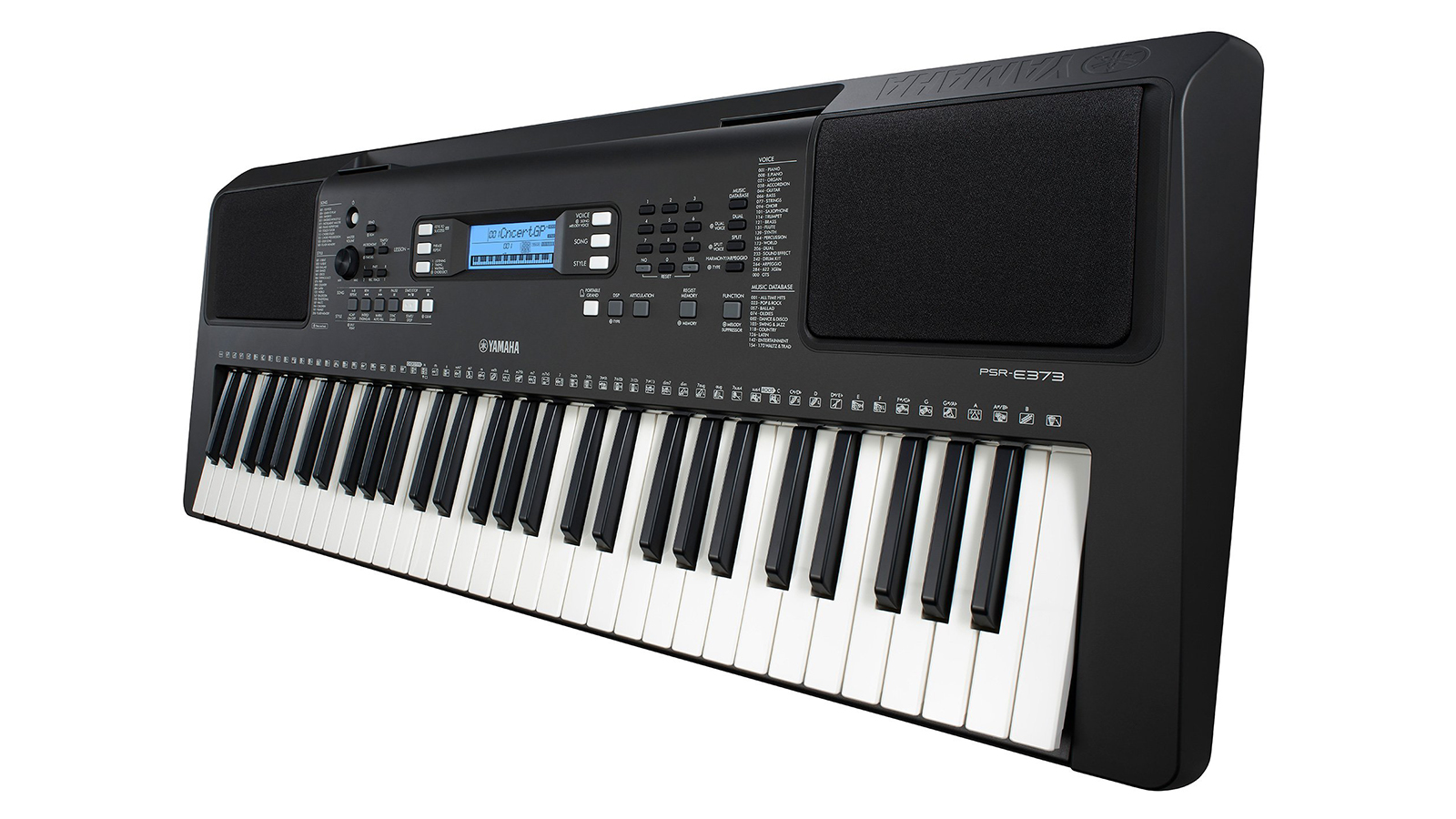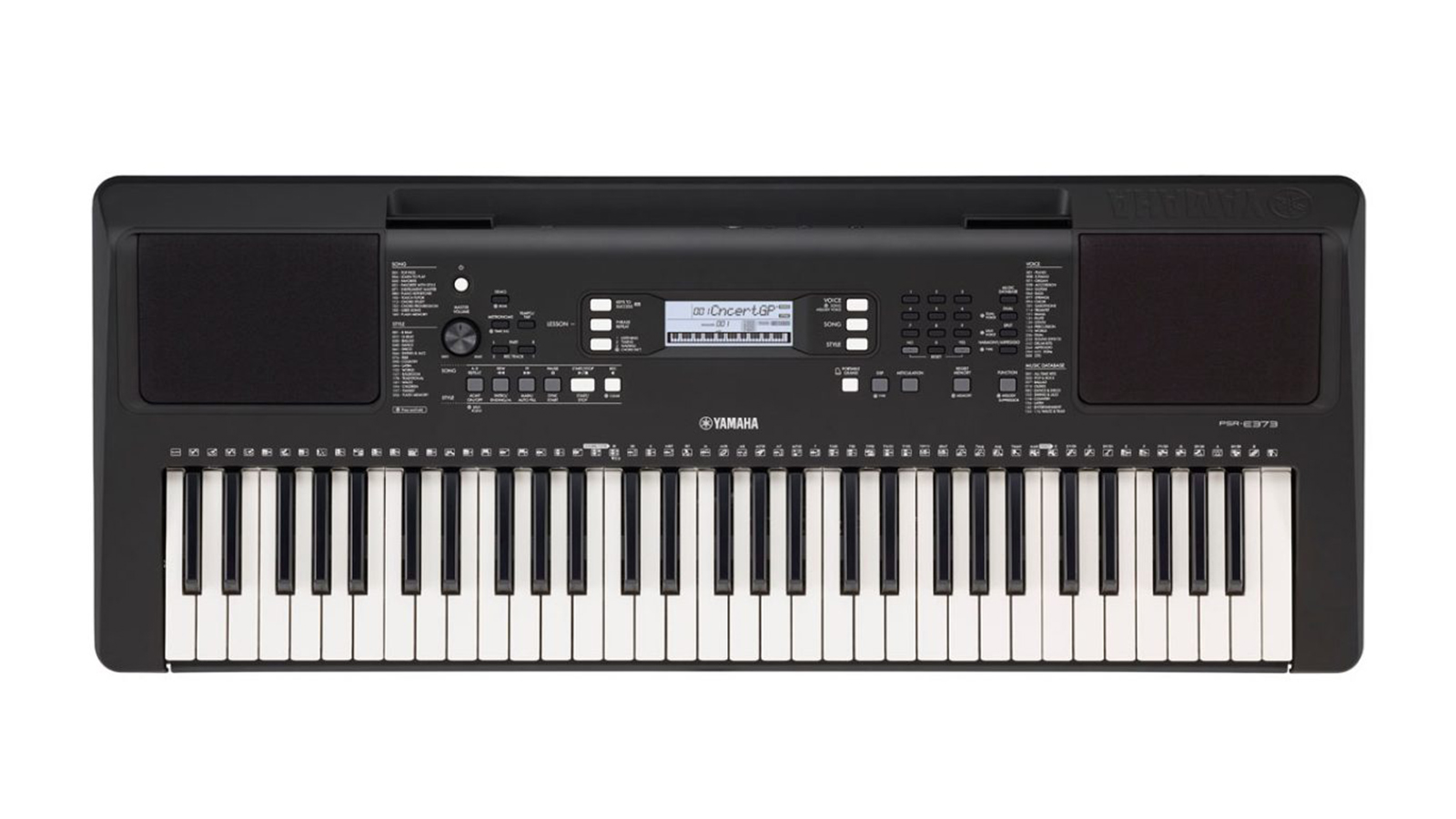MusicRadar Verdict
The PSR-E373 belongs firmly in the home arranger/my first keyboard camp, so as such we wouldn’t recommend it as a pro instrument. However, if a portable auto-accompaniment keyboard is what you’re in the market for, the PSR-E373 is undoubtedly one of the best you’ll find. If you want to learn piano or keyboard and have a little extra fun along the way, there’s probably no safer bet out there. Yamaha continues to build on their impressive pedigree in the area, and the E373’s updated sounds and auto-accompaniment technology, coupled with its broad appeal and competitive range of features for its category make it a great purchase for beginners and hobbyists.
Pros
- +
Updated, increased voice and style count
- +
Built-in USB audio interface
- +
Top notch piano sound
- +
Excellent velocity response
Cons
- -
Speakers a little underwhelming
- -
Super Articulations triggered by front panel button rather than velocity
- -
Only 48-note polyphony
MusicRadar's got your back
Yamaha PSR-E373 review: What is it?
Probably the most widely-known name in portable electronic keyboards, Yamaha have dominated the marketplace for decades with their PortaSound line. The current PSR range of home arranger keyboards includes four 61-key E model designations of varying complexity and versatility, priced accordingly at different levels. Introduced in late 2020 as an upgrade from the previous midrange E363 model, the PSR-E373 has settled neatly into its slot in the lineup, midway between the entry-level E273 and the all-new, range-topping E473.
So what are the differences between the E363 and the new model that supersedes it? The PSR-E373 features a newly-developed tone generator that delivers significant improvements in sound quality over the previous model, as well as 38 brand new high-quality DSP effects. The voice, rhythm and style count have all increased, with the E373 boasting an impressive library of 622 instrument voices and 205 auto-accompaniment styles.
A plethora of other useful features abound, making the E373 a truly versatile instrument and an ideal beginner keyboard. Also known as the YPT-370 in some territories, you get a built-in USB audio interface that allows you to transmit audio data between your keyboard and your computer, an arpeggiator with 150 built-in patterns, a library of 170 popular pre-programmed songs, a melody suppressor function to make it easier to play along with audio tracks fed into the audio input, a "Keys to Success" lesson function and lots more besides. And if 61 keys aren’t enough for you, there’s also a 76-key version, the PSR-EW310, available for a bit more cash.
Yamaha PSR-E373 review: Performance & verdict
The E373’s keyboard has a very light action and feels a little plasticky compared to something like Roland’s GO-61K. This lightness will make it very easy to play for beginners though, and the velocity sensitivity is very responsive and can be set to four different levels of response, or turned off altogether. To find this level of customisable expressiveness on an instrument at this price is remarkable, and the overall feel is a definite upgrade from the E-363.

Casio CT-S1 For a ton of great sounds in a lightweight and playable package, Casio’s ultra-portable CT-S1 is well worth a look, and is also available in red.
Roland GO:KEYS 61K Roland's unique take on the portable arranger keyboard concept features 61 keys, more than 500 sounds, onboard Bluetooth and a Loop Mix feature.
With a feature list as long as this keyboard has, it’s no surprise that the E373’s front panel layout isn’t the easiest to get to grips with, with a particular villain being the functions menu that groups over 60 menu items under a single button. As an example, nearly all the sounds feature built-in reverb as a standard effect, which is turned on by default, but can be turned off using function number 53. Accessing this requires scrolling through a huge list by repeatedly pressing the button, all with the usual cryptic titles such as ‘SupprPan’ and ‘StyleFrz’. You’ll definitely need to scan the manual to get up to speed with this one, although ultimately you’ll be glad you made the effort.
The E373’s twin 2.5W built-in speakers are okay, up to the task from a volume level point of view, with enough oomph to fill a small room without any distortion, but the sound out of them is not particularly inspiring, so we’d recommend using headphones for daily practice and to get the most out of the updated soundset.
Piano doubt about it
One of the main selling points of the E373 is the updated ‘CncertGP’ acoustic grand piano sound, so much so that Yamaha have blessed it with a dedicated ‘Portable Grand’ button on the front panel, enabling it to be called up instantly with a single touch. It’s the same sound as found on the company’s erstwhile flagship Tyros range of professional arranger keyboards and an absolute humdinger of a piano sound at this price level. Apparently sampled from a high-end Yamaha CFX Concert Grand acoustic piano, this is brighter, livelier and a lot less artificial-sounding than the piano sound on the E363. If a good acoustic piano sound is high on your list, this constitutes a big tick in the box.
Want all the hottest music and gear news, reviews, deals, features and more, direct to your inbox? Sign up here.
If a good acoustic piano sound is high on your list, this constitutes a big tick in the box
Elsewhere, the electric pianos are varied and relatively authentic-sounding, as are most voices that are based on samples of real-world instruments such as brass, woodwind and guitar, with a good degree of velocity-based variety in the samples. This allows you to vary the dynamics according to how hard you’re hitting the keys, and there’s also a classy element of sustained vibrato built into many of the presets. Synth sounds are also well catered for, some of which work particularly well when layered with the acoustic piano sound or used in conjunction with the 150 built-in arpeggios, which are more numerous and generally programmed more effectively than those on the 363.
Super Articulation Lite

The E373’s massive sound library has a couple of tricks up its sleeve in the shape of 11 ‘SuperArticulation Lite’ voices. Pared-down versions of the SuperArticulation voices found on the Genos pro arranger keyboard, with these you can emulate things like growl on a saxophone, string trills, a slide up and down the neck of a bass guitar, harmonics on acoustic guitar, falls on horn stabs and other similar types of performance enhancements that it would normally be difficult to pull off with a keyboard. These can go a long way to increasing the expressiveness and realism of your playing, once you’ve had a bit of practice to get the hang of using them effectively.
And that’s where we hit a bit of an articulation frustration situation. In something of a surprise twist, the articulations are activated not by key velocity like they are on the E363, but instead by holding down the Articulation button on the front panel whilst playing. We found this workflow kind of a backward step, requiring you to take one hand off the keyboard to press the button in order to trigger the articulation effect. You do have the option of holding down a connected sustain pedal to engage articulations, but this needs to be configured in the pedal settings menu beforehand and, of course, supersedes the normal functionality of the pedal. We feel that this feature could have been implemented slightly more effectively in order to be properly useful when performing.
Interestingly, and new for the E373, when playing any of the non-SA voices, the Articulation button works as a kind of momentary modulation wheel, introducing a vibrato effect to the sound. This is a nice addition to have, in the absence of a proper mod wheel, and is especially effective on the synth voices, although we would have found it even more useful if the button were positioned nearer the left hand side of the keyboard to facilitate its use as a proper performance control.
Great effection

The 38 new DSP effects are a great inclusion, applicable as they are to any of the onboard voices, providing the capacity to transform and customize the sounds even further. Putting a basic guitar sound through a rotary speaker effect for instance, or whacking distortion on a simple organ sound makes a huge difference and is great fun to experiment with. Unfortunately, none of the effects can be edited - you can’t change the speed of the modulation on the phaser effect for example - but there is a wide variety compared to the rather minimal selection found on the 363, and their presence is definitely a welcome bonus that increases the keyboard’s level of sonic versatility exponentially.
Style it out
Home arranger keyboards like this one, it has to be said, are probably not the coolest when it comes to teen appeal, and it can be a bit of an uphill battle getting kids interested in playing the sort of tunes that are grist to the mill with this kind of keyboard. Although the sounds are excellent, many of the onboard styles are dripping with cheese, but that’s not to say that the E373’s sophisticated auto-accompaniment features should be relegated to the back of the cupboard.
Dig deep enough and you will be rewarded with some updated and more current styles lurking behind that bright, blue LCD screen. This is particularly true of the more modern categories of the onboard song library, which go a long way to making this keyboard slightly more appealing for teenagers. It’s also a lot of fun to play, since the ambitious pre-programmed intros and fill-ins are almost guaranteed to raise a smile, and even more advanced players can use auto-accompaniment features to learn a thing or two about how to improvise effectively over particular chord shapes against backing tracks in multiple genres.
Yamaha PSR-E373 review: Hands-on demos
Alamo Music Centre
Jeremy See
Gearfacts
Yamaha PSR-E373 review: Specifications
- Dimensions (mm): 945 x 369 x 118
- Weight: 4.6㎏
- Keys: 61 velocity-sensitive with four levels of touch response
- Polyphony: 48
- Number of Tones: 622 (241 Panel Voices + 22 Drum/SFX kits + 20 Arpeggio + 339 XGlite Voices)
- Number of Rhythms/Styles: 205
- Number of Arpeggios: 150
- Effects: 38 DSP, 12 Reverb, 5 Chorus, 6 Master EQ & 26 Harmony effects
- Other features: Dual/Split/Layer mode, melody suppressor, auto accompaniment, 170-song music database, 2-track song recorder, Keys to Success onboard lesson system
- Speakers: 12 cm × 2 (Output: 2.5 W + 2.5 W)
- Power Supply: 12V DC / 6 x AA Batteries
- Connectivity: 6.3mm headphone jack, 6.3mm sustain pedal input, 3.5mm aux input, USB to Host
- Contact: Yamaha
Dave has been making music with computers since 1988 and his engineering, programming and keyboard-playing has featured on recordings by artists including George Michael, Kylie and Gary Barlow. A music technology writer since 2007, he’s Computer Music’s long-serving songwriting and music theory columnist, iCreate magazine’s resident Logic Pro expert and a regular contributor to MusicRadar and Attack Magazine. He also lectures on synthesis at Leeds Conservatoire of Music and is the author of Avid Pro Tools Basics.

